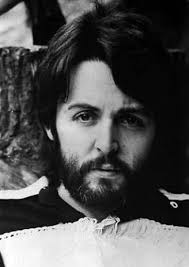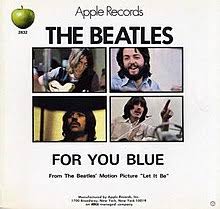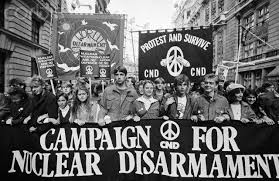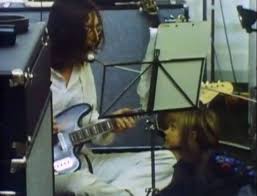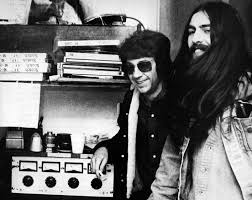John Lennon and George Harrison wrote a letter to Paul.......
Dear Paul, We thought a lot about yours and the Beatles LPs – and decided it’s stupid for Apple to put out two big albums within 7 days of each other (also there’s Ringo’s and Hey Jude) – so we sent a letter to EMI telling them to hold your release date til June 4th (there’s a big Apple-Capitol convention in Hawaii then). We thought you’d come round when you realized that the Beatles album was coming out on April 24th. We’re sorry it turned out like this – it’s nothing personal. Love John & George. Hare Krishna. A Mantra a Day Keeps MAYA! Away.
The letter was sealed in an envelope marked “From Us, To You”, and left at Apple’s reception for a messenger to deliver to McCartney’s home at 7 Cavendish Avenue. However, Starr agreed to take it round in person. “I didn’t think it fair some office lad should take something like that round,” he reasoned.
By this time McCartney had long tired of arguing over Apple’s future, and the various parties were more likely to communicate by letter or through their managers rather than face-to-face interviews. McCartney had recorded his album in secret, under the pseudonym Billy Martin, choosing to keep the news from the press and his former bandmates for as long as possible.
McCartney might once have agreed with the logic behind the decision to postpone his album, but after months of acrimony he was in no mood for conciliatory agreements. The contents of the letter left him furious, and Starr received the full brunt of his anger.
Paul McCartney - "Ringo came to see me. He was sent, I believe – being mild mannered, the nice guy – by the others, because of the dispute. So Ringo arrived at the house, and I must say I gave him a bit of verbal. I said: ‘You guys are just messing me around.’ He said: ‘No, well, on behalf of the board and on behalf of The Beatles and so and so, we think you should do this,’ etc. And I was just fed up with that. It was the only time I ever told anyone to GET OUT! It was fairly hostile. But things had got like that by this time. It hadn’t actually come to blows, but it was near enough.
Unfortunately it was Ringo. I mean, he was probably the least to blame of any of them, but he was the fall guy who got sent round to ask me to change the date – and he probably thought: ‘Well, Paul will do it,’ but he met a different character, because now I was definitely boycotting Apple."
Starr described the situation in an affidavit read out in court during the 1971 hearings to end the Beatles partnership.
I went to see Paul. To my dismay, he went completely out of control, shouting at me, prodding his fingers towards my face, saying: ‘I’ll finish you now’ and ‘You’ll pay.’ He told me to put my coat on and get out. I did so.
Starr was immensely upset by the exchange, and reported back to Apple. Lennon and Harrison agreed to let McCartney’s album come out as planned, and delayed the release of Let It Be. While McCartney had scored a superficial victory, his relations with the drummer took a number of years to fully recover.
They eventually sent Ringo round to my house at Cavendish with a message: ‘We want you to put your release date back, it’s for the good of the group’ and all of this sort of shit, and he was giving me the party line, they just made him come round, so I did something I’d never done before, or since: I told him to get out. I had to do something like that in order to assert myself because I was just sinking. Linda was very helpful, she was saying, ‘Look, you don’t have to take this crap, you’re a grown man, you have every bit as much right…’ I was getting pummelled about the head, in my mind anyway.
Paul McCartney
Many Years From Now, Barry Miles
The McCartney album was issued in the UK on 17 April 1970, while Let It Be was eventually released on 8 May. On 10 April a press release for the solo album caused a sensation by seemingly confirming that The Beatles had finally split up.
The world reaction was like ‘The Beatles Have Broken Up – It’s Official’ – we’d known it for months. So that was that, really. I think it was the press who misunderstood. The record had come with this weird explanation on a questionnaire of what I was doing. It was actually only for them. I think a few people thought it was some weird move of me to get publicity, but it was really to avoid having to do the press.
Paul McCartney
Anthology
